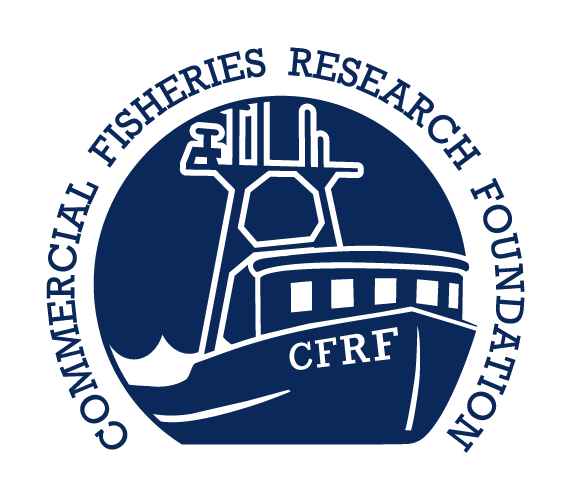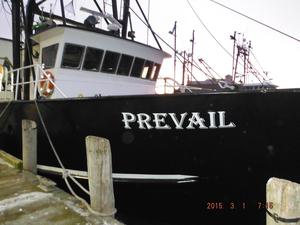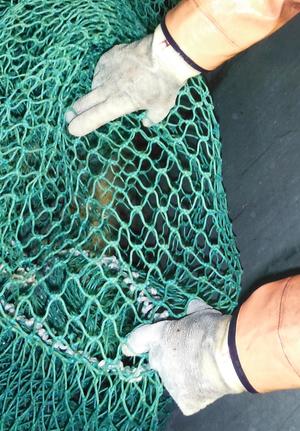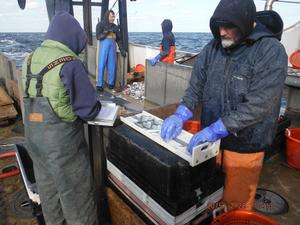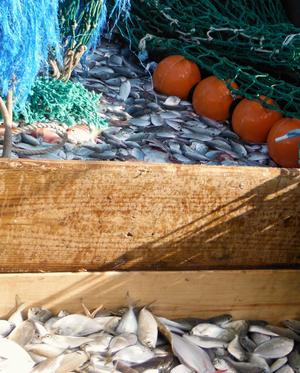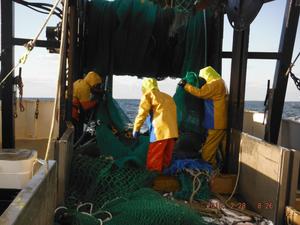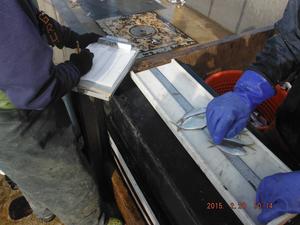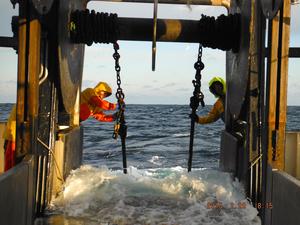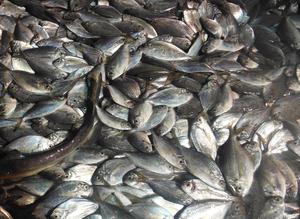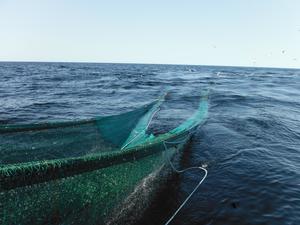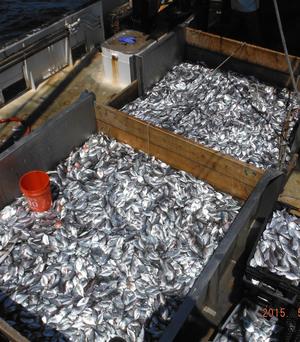Improvement of Trawl Net Selectivity in the Directed Butterfish Fishery Using Square Mesh and T-90 Codend Liners to Reduce Juvenile Butterfish – Proof of Concept Project
- Program: Special Project under NOAA Award NAO8NMF4720595
- Total Amount Awarded: $99,959
- Project Duration: October 1, 2014 - July 31, 2015
- Status: Completed
Project Team:
- Chris Mazzeo, , Cornell Cooperative Extension Marine Program
- Jonathan Knight, Superior Trawl
- Patrick Sullivan, Cornell University
- Captain Phil Ruhle, Jr., F/V Prevail
- Glenn Goodwin, Seafreeze Ltd.
- Emerson Hasbrouk, Project Leader, Cornell Cooperative Extension Marine Program
- John Scotti, Cornell Cooperative Extension Marine Program
- Tara Froehlick, Cornell Cooperative Extension Marine Program
- Kristin Gerbino, Cornell Cooperative Extension Marine Program
- Joe Costanzo, Cornell Cooperative Extension Marine Program
Project Summary:
This Proof of Concept project focused on testing the effectiveness of two codend modifications to reduce juvenile butterfish catch. Based on the fact that 50% of butterfish are mature at 12 cm, the specific goal of this project was to determine the effectiveness of the two experimental codends at reducing the capture of 12 cm butterfish by a minimum of 50%. A trawl net was modified to accommodate a “trouser trawl” design to tow the control codend and the experimental codend simultaneously. The experimental codend was constructed of 6.5” square mesh with two interchangeable codendliners: (1) an 8 cm square-mesh constructed codend liner and (2) an 8 cm T-90 mesh constructed codend liner. A standard 6 cm diamond mesh codend liner typically used in the squid fishery was used as the control. The team analyzed the difference in butterfish catches in the two experimental codends compared to the control codend and compared the length frequency distribution of butterfish in the experimental and the control codends. For both the square mesh and T-90 codends, results of the statistical analysis showed a significant difference in the catch weights of butterfish compared to the control codend. Also the square mesh codend and the T-90 codend effectively reduced the catch of 12 cm butterfish by 66.5% and 67.1% respectively. According to the length frequency distributions and selectivity curves, juvenile butterfish were drastically reduced in both experimental codends as hypothesized. Both experimental codends were as effective in releasing juvenile butterfish as the 3 inch diamond mesh currently required in the directed butterfish fishery. This limited proof of concept study shows that both of these experimental codends have the potential to release juvenile butterfish equivalent to the current required codend. This suggests that a more extensive and robust test be implemented to verify the effectiveness of these two experimental codends to reduce the capture of juvenile butterfish.
